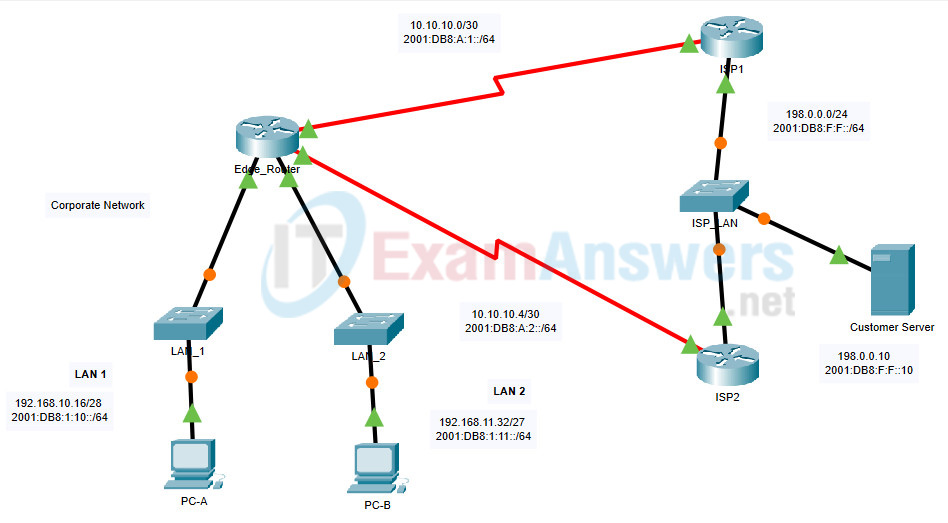

For simplification, leading zeros of each 16 bit block can be omitted. Also of note is that instead of a period, a colon now separates each block. You can express IPv6 addresses in eight blocks. The designates how many of the high-order contiguous bits of the address make up the prefix. The field consists of the bits of the address to be configured. You do not need to assign a link-local address by using this command since one is automatically created. You can assign multiple globally reachable addresses to an interface by using this command. Use this command to configure an IPv6 address on an interface, including tunnel and loopback interfaces, and to enable IPv6 processing on this interface.

Use this command to disable IPv6 routing on an interface. You do not need to use this command if you configured an IPv6 global address on the interface. When you use this command, the interface is automatically configured with a link-local address. Use this command to enable IPv6 routing on an interface, including tunnel and loopback interfaces, that has not been configured with an explicit IPv6 address. Use this command to disable the forwarding of IPv6 unicast datagrams. Use this command to enable the forwarding of IPv6 unicast datagrams. This command disables ipv6 forwarding on the router. This command enables IPv6 forwarding on the router This section also describes IPv6 management commands and show commands. This section describes the IPv6 commands you use to configure IPv6 on the system and on the interfaces. Shows the maximum transmission size for packets on this interface, in bytes. Show whether IPv6 is enabled on the interface Shows the IPv6 address of this interface If you specify a loopback ID, the following information appears: Shows the number of packets transmitted from this interface. Shows the number of packets received on this interface. Shows the loopback ID associated with the rest of the information in the row.

TABLE 5-2 Entry Definitions for show interface loopback If you do not specify a loopback ID, the following information appears for each loopback interface on the system. This command displays information about configured loopback interfaces. This command removes the loopback interface and associated configuration parameters for the specified loopback interface. Use this command to enter the Interface Config mode for a loopback interface. To assign an IPv6 address to the loopback interface, see ipv6 address. To assign an IP address to the loopback interface, see ip address. The loopback interface is typically used by routing protocols. This interface can provide the source address for sent packets and can receive both local and remote packets. A loopback interface is always expected to be up.
Summary route calculator ipv6 how to#
The commands in this section describe how to create, delete, and manage loopback interfaces. If you enable IPv6 on the interface and assign an address, the IPv6 address and prefix display. Shows the maximum transmission unit for packets on the interface. If you specify a tunnel ID, the command shows the following information for the tunnel: Shows the destination transport address of the tunnel. Shows the source transport address of the tunnel. TABLE 5-1 Entry Definitions for show interface tunnel If you do not specify a tunnel ID, the command shows the following information for each configured tunnel. This command displays the parameters related to tunnel such as tunnel mode, tunnel source address and tunnel destination address. This command specifies the mode of the tunnel. This command specifies the destination transport address of the tunnel. This command specifies the source transport address of the tunnel, either explicitly or by reference to an interface. This command removes the tunnel interface and associated configuration parameters for the specified tunnel interface. Use this command to enter the Interface Config mode for a tunnel interface. To assign an IPv6 address to the tunnel interface, see ipv6 address. To assign an IP address to the tunnel interface, see ip address. Automatic tunnels, in contrast, infer the endpoint of the tunnel from the destination address of packets routed into the tunnel. The distinction is that configured tunnels are explicitly configured with a destination or endpoint of the tunnel. These tunnels are divided into two classes: configured and automatic. The commands in this section describe how to create, delete, and manage tunnel interfaces.Several different types of tunnels provide functionality to facilitate the transition of IPv4 networks to IPv6 networks.


 0 kommentar(er)
0 kommentar(er)
